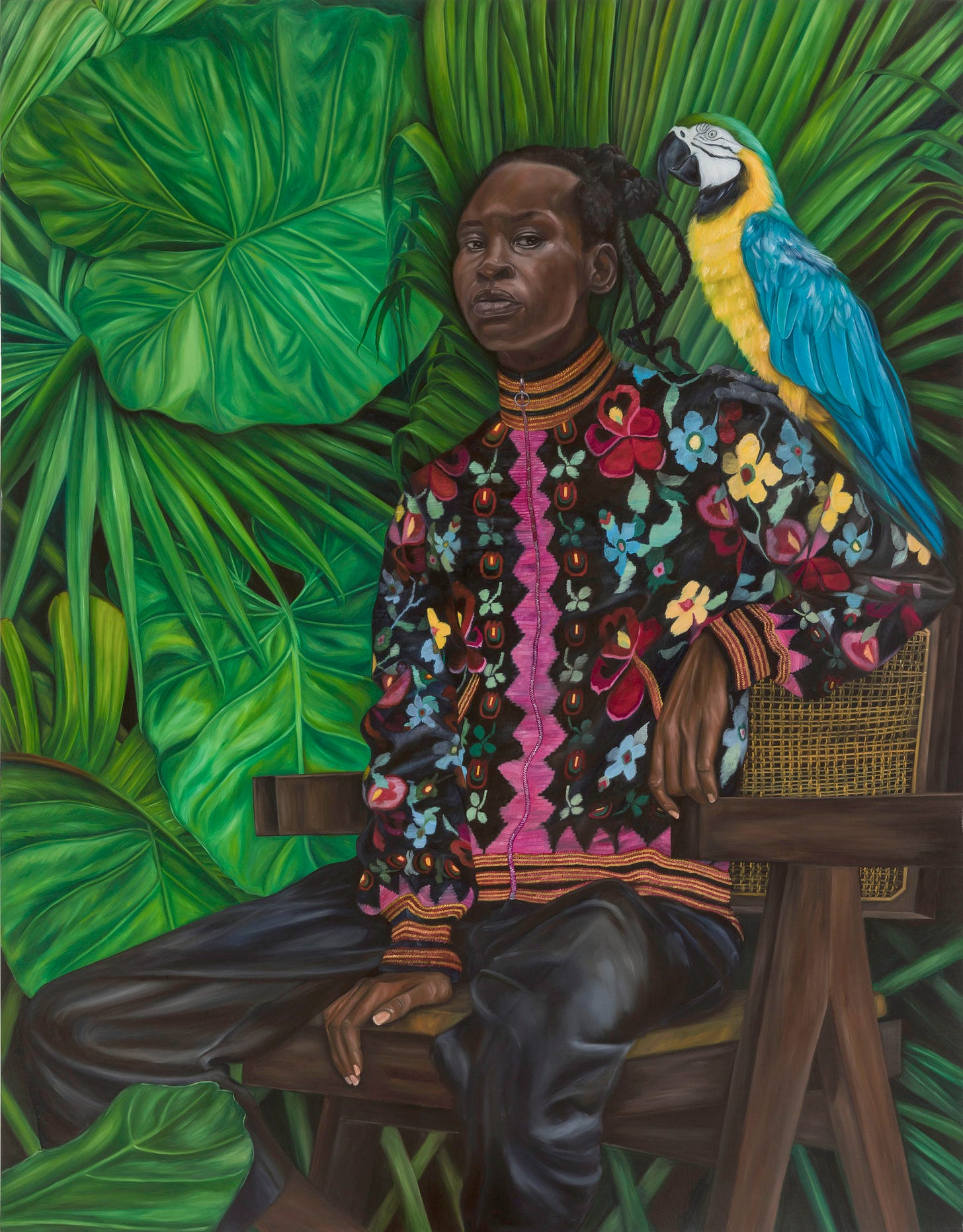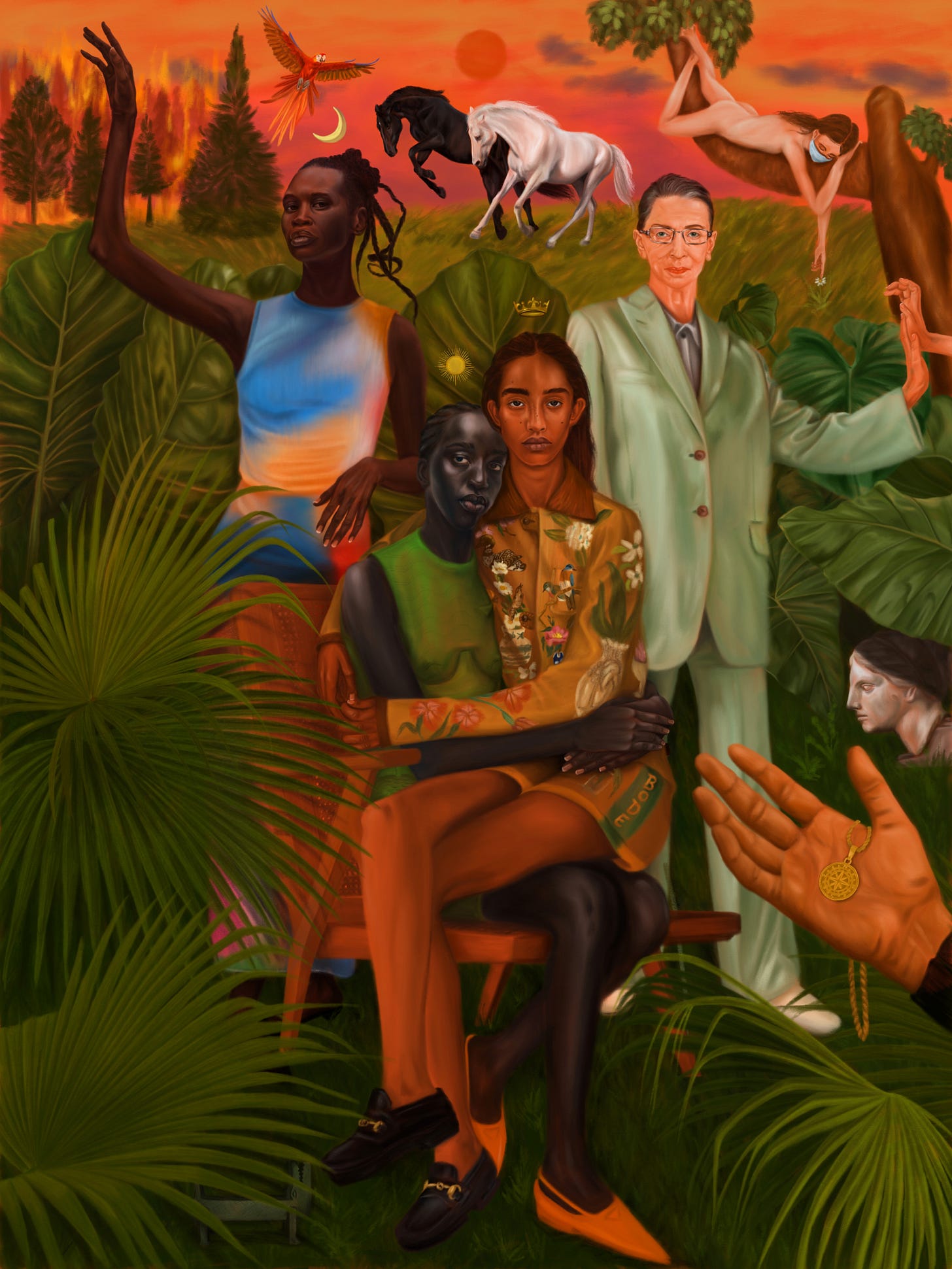Share the post "Strength, Resilience and the Power of Modern Women. Interview with Artist Stefania Tejada"
Tell us what you do and your beginnings.
My Latino heritage is woven into everything I do—it shapes my perspective, my choices, and the stories I tell through my work. The experience of being a woman in this environment adds another layer to my art: a thread that is both complex and constant and one that has shaped the way I approach creation.
From an early age, drawing was always there, like a quiet rhythm in my life. It wasn’t something I excelled at; it was just something I did. My art teachers, mostly older men, focused on precise, traditional techniques—replicating objects as they were, lifeless. My only exposure to art beyond those classes was Fernando Botero. My grandmother had replicas of his work lining her staircase. I remember staring at his figures, the women in particular, and wondering, Who are these beings looking back at me? It felt as though they carried a message, something unspoken, hidden in their eyes.
When I attended college in Bogotá to study fashion design, I didn’t initially realize how much more there was to art than the replication of objects or people. My understanding of art was technical—a series of steps, a skill to master—but I had no awareness of how composition, symbolism, or storytelling could give my work meaning. That changed when I was mistakenly enrolled in an elective course called Expression.

That class, focused on pencil drawing, introduced me to a new way of seeing. For the first time, I understood how light and shadow work to create form, and how they shape the way we perceive objects. The concepts were simple, but they unlocked something in me. Art became more than just technique—it became about truly observing, understanding, and connecting with the world. It wasn’t just about circles, squares, and lines. It was about seeing deeper and creating with intention.
During this time, I connected with a group of artists from Cali who were also living in Bogotá. One of them became my teacher, helping me refine my drawing and watercolor techniques. But more importantly, he encouraged me to develop my own style, to create work that felt authentic to me. That period was a turning point. I stopped seeing art as a set of rules to follow and began seeing it as a form of self-expression.
A few years later, I moved to Monterrey, Mexico, to finish my studies in fashion design. A leap into the unknown. The move was transformative, —not just for my education, but for my personal growth. I didn’t know anyone when I arrived, but that solitude gave me the space to explore myself and my goals. One of my professors, Jasmin, had an enormous impact on me. Her curiosity was boundless, and she challenged every preconceived notion I held. Her approach inspired me to think differently—not just about art, but about life. During this time, I wrote countless essays, absorbing new ideas and trying to understand myself through them.
Eventually, I found a circle of like-minded people who believed in sharing knowledge and ideas as naturally as breathing. Every Friday afternoon, they held sessions at their apartment where each person would take a turn teaching a class on a skill or method from their creative discipline. Together, we were intellectually nurturing one another, exchanging perspectives, and building a unique community. This experience introduced me to a new way of thinking—something I had never encountered in Colombia.
Among them was Rodrigo Tello, who became a pivotal figure in my development. Rodrigo was blunt and always demanded clarity. He would ask: What do you want? Be specific”. He challenged me to define my goals, to strip away fear and doubt until all that remained was purpose. His advice was practical, almost ruthless: “You don’t get what you don’t ask for.” It sounds simple, but it wasn’t. Fear of rejection, of hearing “no,” had kept me small for too long. With Rodrigo’s guidance, I stepped into the digital realm, and everything changed.

This shift led to collaborations I couldn’t have imagined—first with Tumblr, the leading blogging platform in the US at the time, and then with Lenny Letter, the feminist platform co-founded by Lena Dunham and Jennifer Konner. Through Lenny Letter, I found myself painting stories of resilience, strength, and transformation.
Continue on MuseumWeek magazine.
